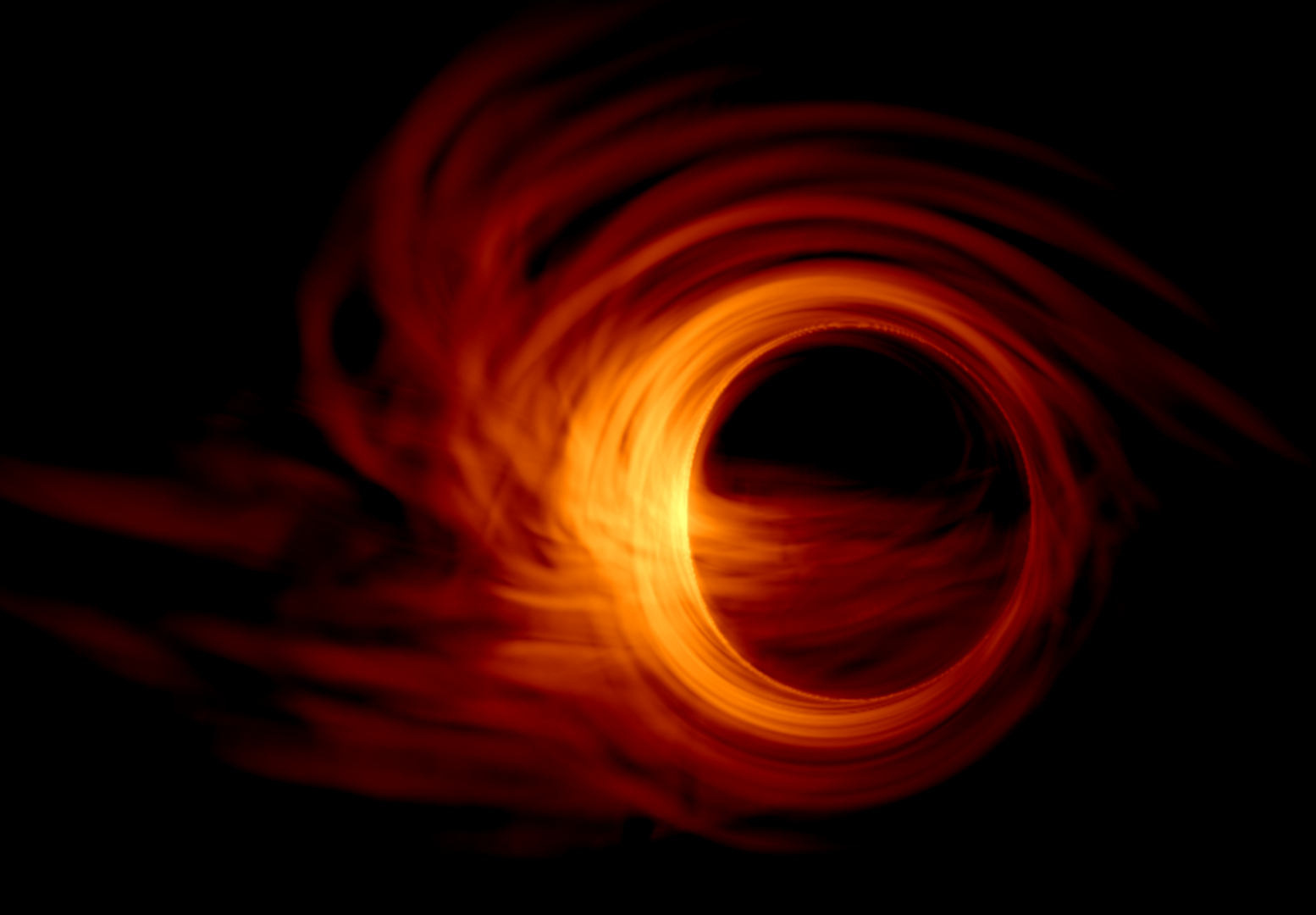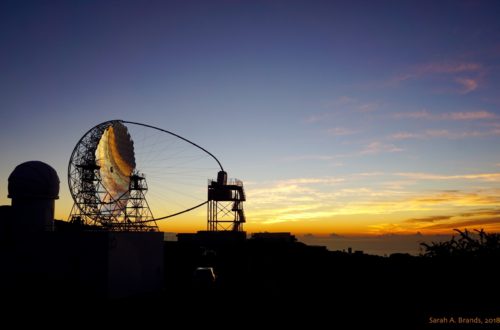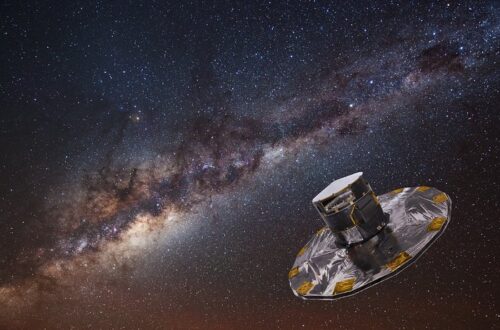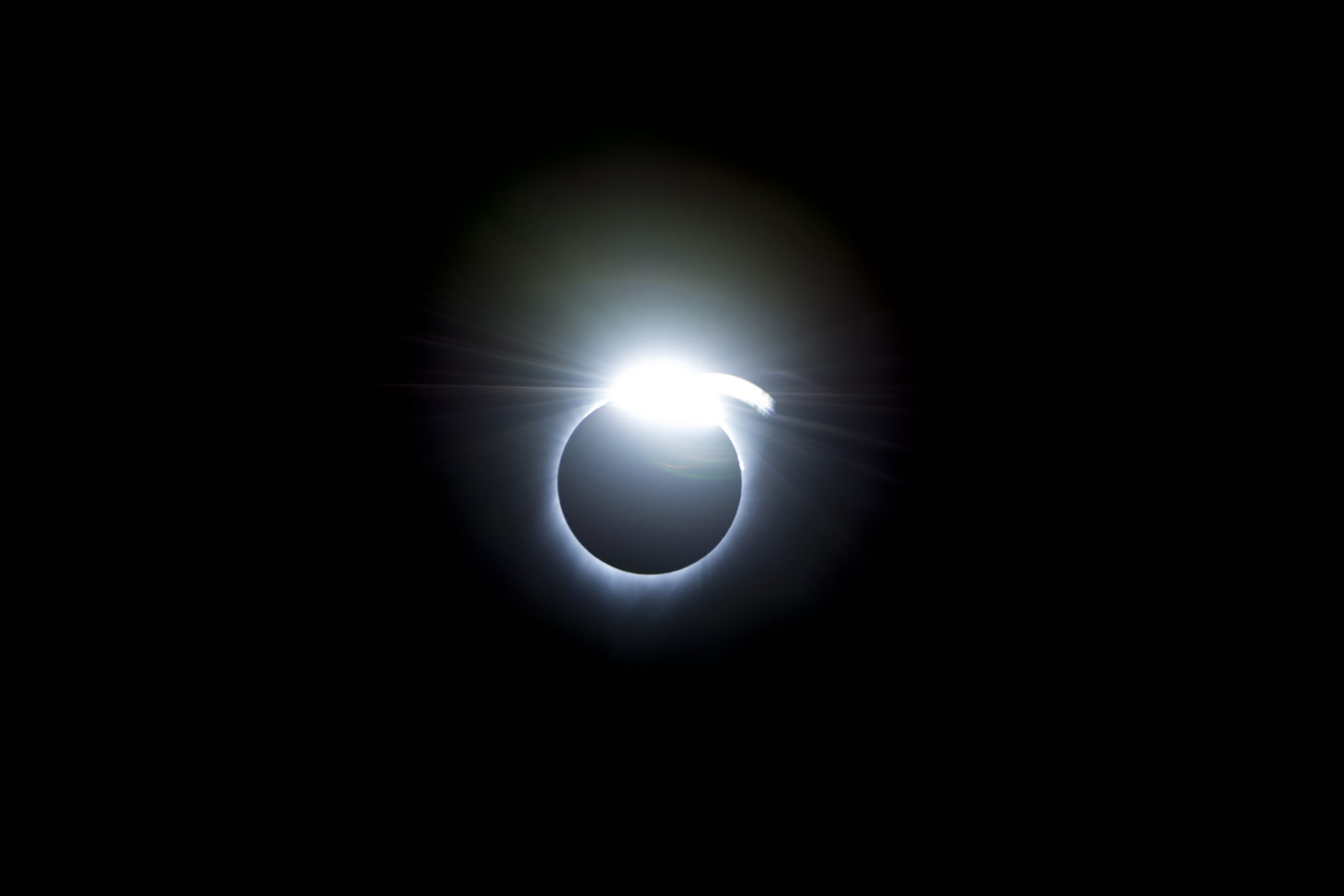
The Science Behind the Solar Eclipse
An eclipse is defined as a total or partial obscuring of one astronomical body by another. For millennia, cultures all over the world have witnessed, marveled at, and feared eclipses. For residents of planet Earth, the two most interesting and important eclipses are of eclipses the Sun (Solar eclipse) and the Moon (Lunar Eclipse).
A lunar eclipse occurs when Earth comes between the Sun and the Moon. The Moon shines brightly in the sky primarily because it reflects most of the light receives from the Sun. However, during the lunar eclipse, the Earth obstructs the path of light from the Sun to the Moon, leaving the Moon behind in its shadow. Interestingly, the Moon does not go totally dark (this might be addresses in a future blog post) but gets a reddish hue. However, if someone is present on the lunar surface, they won’t be able to see the Sun as the Earth would block it completely!
On the other hand, a solar eclipse occurs when the Sun is eclipsed by the Moon (the Moon obstructs our view of the Sun). This blog post will focus on the solar eclipse and the science behind it, as there is one coming up very soon (June 10th). This is part 1 of a two part blog post about eclipses. First, let’s discuss some important ideas that can help us understand the science better.
Size does Matter (and so does Distance)
The Moon has a diameter of around 3500 kms. The Sun’s diameter is a whopping 1.4 million kms. Given this extreme difference in size, you might ask the question, “How can the Moon eclipse the Sun?!” Clearly, if you put them side by side it is not difficult to see how tiny the Moon is next to the Sun (400 times smaller).
This question is resolved if one accounts for the physical separation between the Earth and these two astronomical bodies. Even though the Moon is smaller, it much closer to us than the Sun. Not only is the Sun 400 times bigger than the Moon, it is also 400 times further away from us than the Moon is. It is this coincidence that makes the Moon and the Sun appear to be the same size. You might be familiar with this phenomenon in everyday life – objects further away appear smaller than nearby ones; even though one of them may be much bigger if they are placed side by side.
The Moon’s orbit around the Earth is very nearly circular (but not exactly; in reality it is elliptical – shaped like an egg). What that means is that the Moon is not always at a fixed distance from the Earth. As the Moon orbits the Earth its distance from the Earth is always changing; some days it is closer to us and further away on others. Now recall what we discussed in the previous paragraph – objects that are further away appear smaller. This implies that the closer the Moon is, the larger it appears! You can see in the image below (Figure 1), when the Moon is closest to the Earth (the point in space when one celestial body is closest to another body is called the perigee), it appears 12% larger than when it is farthest (the point known as the apogee). This size difference is easily noticeable by the human eye!
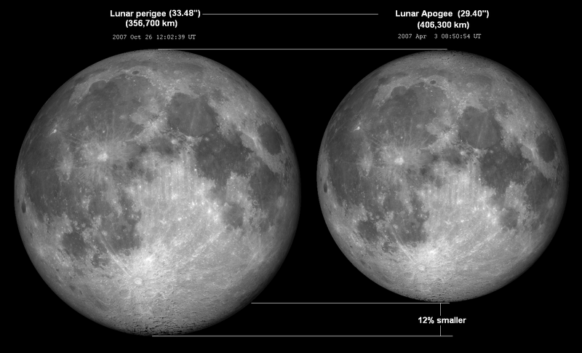
Game of Shadows
The shadows cast by the Moon play an very important role in explaining what kind of eclipse we will experience. So let’s start with the shadow basics! Consider a source of light (such as a bulb) in a room. Place an opaque (not transparent) object (could be your hand or a ball) in that light. What do you see?
The object blocks out the light and casts a shadow (due to the absence of light) on the room’s wall. Now observe the shadow on the wall. You will notice that there are two parts to it: 1) a central darker part, 2) a comparatively less dark part surrounding the central dark region. The central darker region of the shadow is called the Umbra (in this region the object blocks all light from the source and so it completely dark). Surrounding the umbra is region which is neither bright nor completely dark – this region of partial darkness is called the Penumbra (this happens when source is blocked partially; so not all light from the source is blocked). Figure 2 is a good illustration of shadow formation.
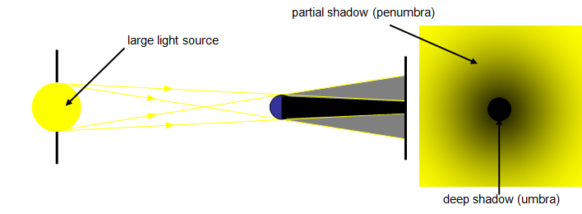
Another way to think about shadows is as follows: imagine an ant wandering on the wall. If this ant wanders into the shadow region, what would it experience? Within the umbra it would experience total darkness. As it moves into the penumbra region it would note an increase in brightness, and if it looks up, it would observe a part of the the light source too.
Now we have covered the basics of what we need to understand the different types of solar eclipses. In the next post, I will use these basics to explain how the Earth-Moon-Sun system can produce a variety of magnificent eclipses! So stay tuned!

